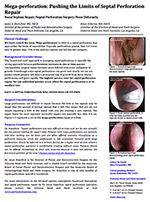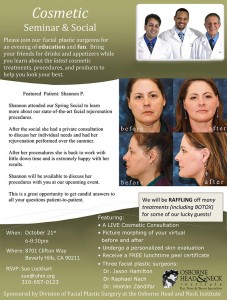- Hereditary Hemorrhagic Telangiectasia - May 25, 2016
- Hereditary Hemorrhagic Telangiectasia: Septal Perforation and Nose Bleeds - May 23, 2016
- Hereditary Hemorrhagic Telangiectasia: Epistaxis and Septal Perforation - May 18, 2016
- Wegener’s Granulomatosis: Autoimmune Disease and Multi-Focal Septal Perforation - May 9, 2016
- Kyle Korver: Facial Injury and Nasal Fracture - March 24, 2015
- Russell Westbrook: Facial Injury and Surgery - March 5, 2015
- Mega-perforation: Pushing the Limits of Septal Perforation Repair - November 26, 2014
- Septoplasty Complication and Septal Perforation - November 24, 2014
- Nose Picking (Rhinotillexis) and Septal Perforations: Why I should stop picking my nose…? - November 24, 2014
- Nasal Fractures, Septal Hematoma, and Septal Perforation: Simultaneous Rhinoplasty and Septal Perforation Repair - October 1, 2014
CLINICAL CHALLENGE
We have coined the term ‘Mega-perforation’ to refer to a septal perforation that approaches the limits of reparability. Typically perforations greater than 3.0-3.5cm and/or greater than 75% of the anterior septum size fall into this category.
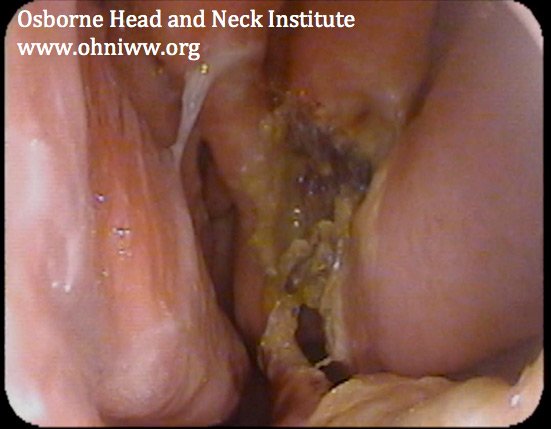
MANAGEMENT CONSIDERATIONS
The “watch and wait” approach to managing septal peforations is typically the wrong approach because perforations increase in size as time passes. Consequently, surgical repair becomes more difficult with every millimeter of growth. Eventhough some septal perforations can grow very slowly, we can not predict which patients will have a protracted rate of growth from those whose perforations will grow rapidly. The highest success rates for septal perforation repair, for any individual patient, occur when the septal perforation is at its smallest size.
FACT: A SEPTAL PERFORATION WILL NEVER HEAL ON ITS OWN.
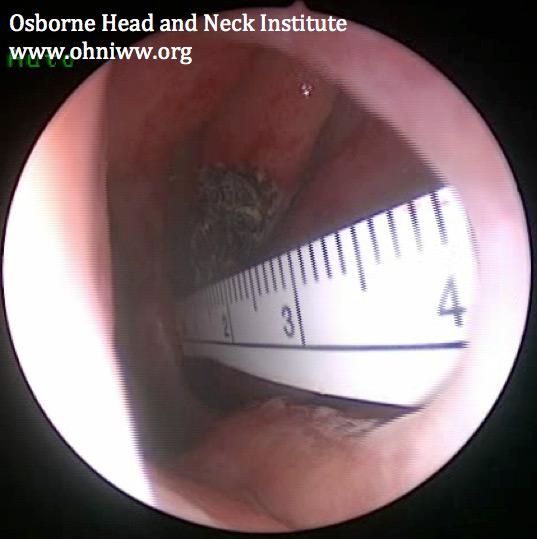
SURGICAL CONSIDERATIONS
Large perforations are difficult to repair because the hole in the septum may be larger than the amount of normal septum that is left. This means that you are not simply repairing a hole in the septal wall, you are creating a new septum. The upper limits for most reported successful repairs are typically less than 3-4 cm. Figure 1-3 represent a successful mega-perforation repair at 4.2cm.
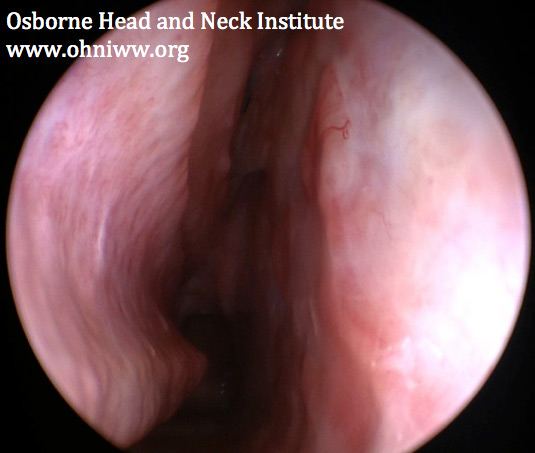
SURGEON COMMENTS
Dr. Hamilton- “Septal perforations are very difficult to treat and can be very stressful for the patient looking for expert help. Patients with large perforations are typically told that nothing can be done and are often offered cosmetic rhinoplasty as a palliative measure, while the perforation is left untreated. Patients with large perforations should be referred to a tertiary facility for a higher level of care, where a septal perforation specialist is comfortable treating difficult cases. Patients should not be offered rhinoplasty as their sole recourse because it does not address the functional problem of the nose.”
Patient stories with Dr. Hamilton
Dr. Jason Hamilton is the Director of Plastic and Reconstructive Surgery for the Osborne Head and Neck Institute, and is double board certified by the American Board of Facial Plastic and Reconstructive Surgery and the American Board of Otolaryngology/Head and Neck Surgery. Dr. Hamilton is one of only handful of septal perforation specialist worldwide.
For more information on the deviated septum, septoplasty, functional rhinoplasty and septal perforation repair by Dr. Jason Hamilton, septal perforation specialist, please contact the Osborne Head and Neck Institute or visit
www.perforatedseptum.com.

